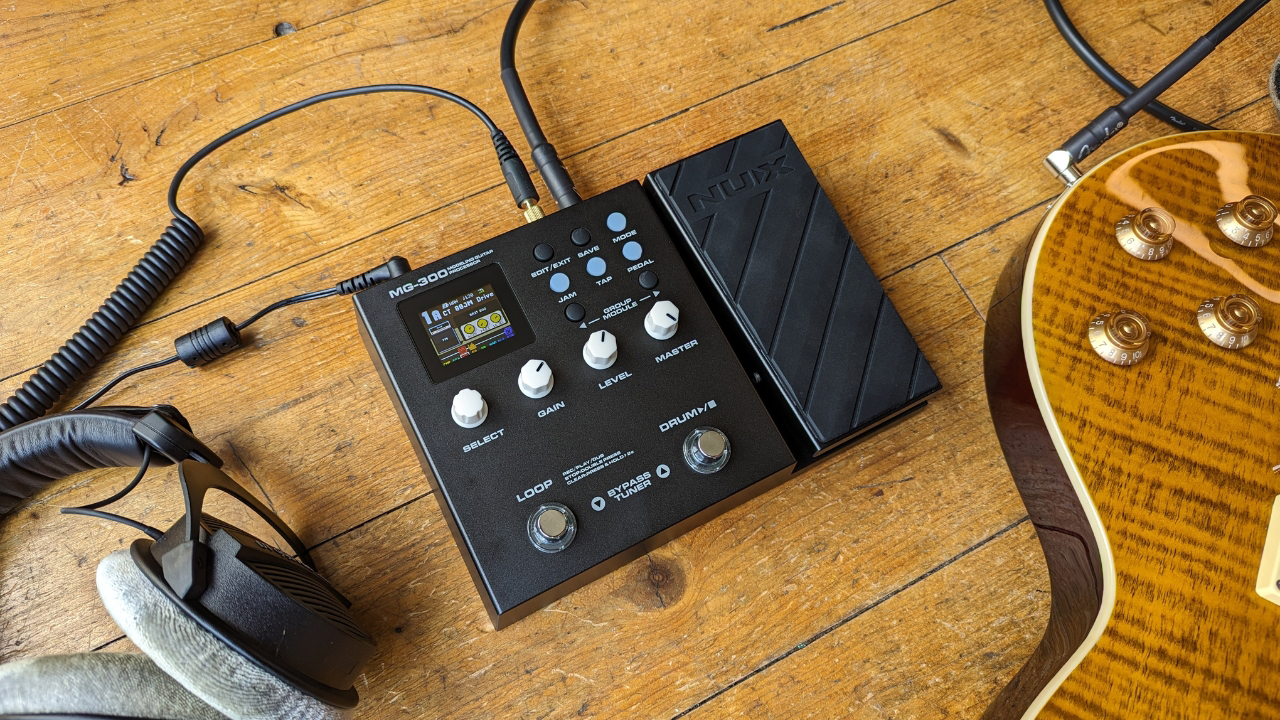Guitar World Verdict
A brilliant multi-effects pedal and amp simulator for the beginner player, the NUX MG-300 delivers plenty of quality sounds and features for relatively little money.
Pros
- +
Excellent value for money
- +
Wide-ranging tones that sound great
- +
Expression pedal gives you options
- +
Useful looper for practice
Cons
- -
Screen is hard to see when standing
- -
I had issues with the drivers
You can trust Guitar World
Multi-effects pedals have come a hell of a long way since I bought my Zoom 606 while in my second year of playing guitar. What was once laughed at as a poorer-quality version of a ‘proper’ pedalboard has now risen to take over our rigs completely. Best of all, beginner players don’t have to spend gazillions on a capture-ready, IR-loaded, reamp-capable rack unit to get every amp tone imaginable.
Much like my beloved Zoom 606, the NUX MG-300 is a budget multi-effects pedal with an expression pedal and a simple look that belies its depth of features. With a huge array of amp and effects tones, IR-ready capabilities, built-in looper, and a relatively cheap price point, on paper, it’s the perfect multi-effects pedal for beginner guitar players.
NUX MG-300 review: Features
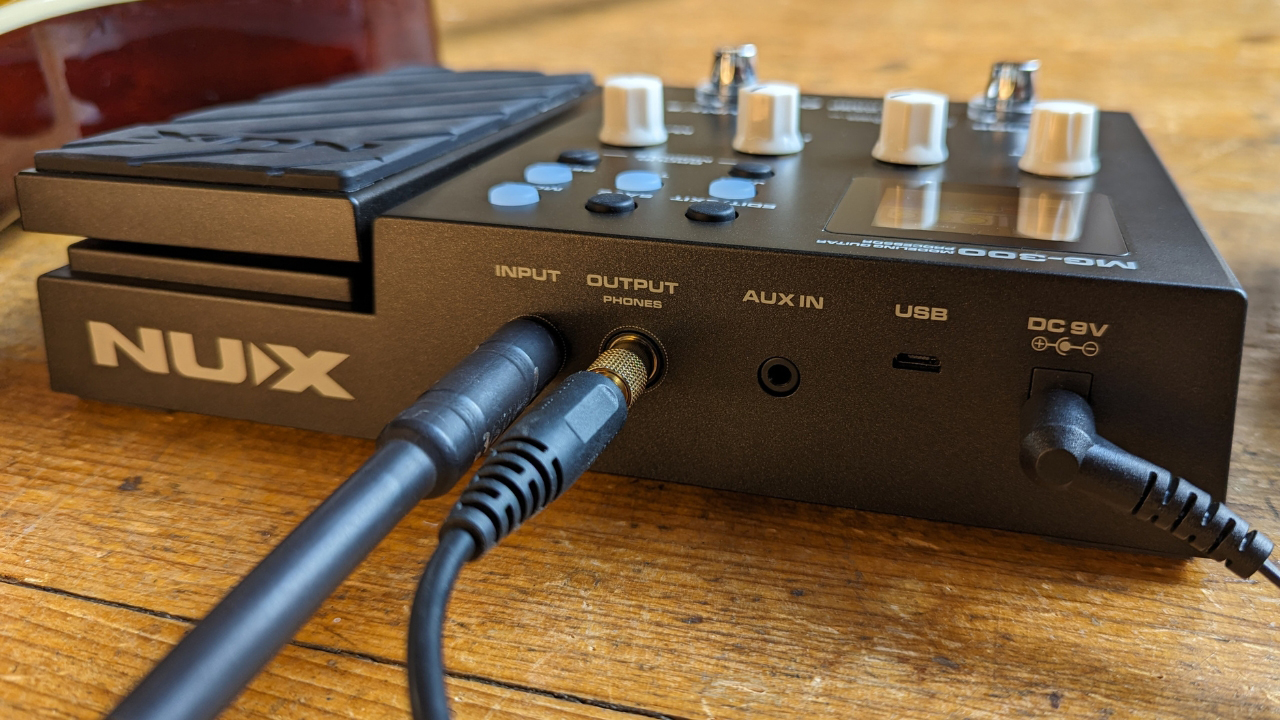
Unboxing the NUX MG-300 is a simple affair, it comes nestled in amongst some soft foam with a manual, power supply, and that’s about it. It felt plasticky yet robust in my hands, certainly hardy enough to put up with a beginner practice regimen. The footswitches are nice and solid although the white plastic knobs above don’t feel quite as sturdy. There’s an endless encoder for selecting your preset and controls for gain, level, and master.
Above that there are a multitude of soft buttons that tweak settings with edit/exit, save, mode, jam, tap, pedal, and two ‘group module’ buttons marked with a left and a right arrow. To the left, you’ve got a full-color screen that can display a variety of things depending on how you’re using the pedal. The front panel is clearly laid out, and we don’t need the manual to begin cycling through presets, making changes, and trying out the looper. Of course, there’s a lot more depth on offer - more on which later - but it’s nice to know that a newbie guitarist can plug the MG-300 in and begin playing immediately.
On the back panel, you’ve got a single 1/4-inch input and output, with the out doubling as your headphone socket. There’s a 1/8-inch aux-in for jamming along to tracks as well as a Micro USB port for connecting to a computer to use the companion app. On the face of it things are relatively spartan, which you’d expect at this price point, but there’s plenty more under the hood just waiting to be discovered.
NUX MG-300 review: Usability
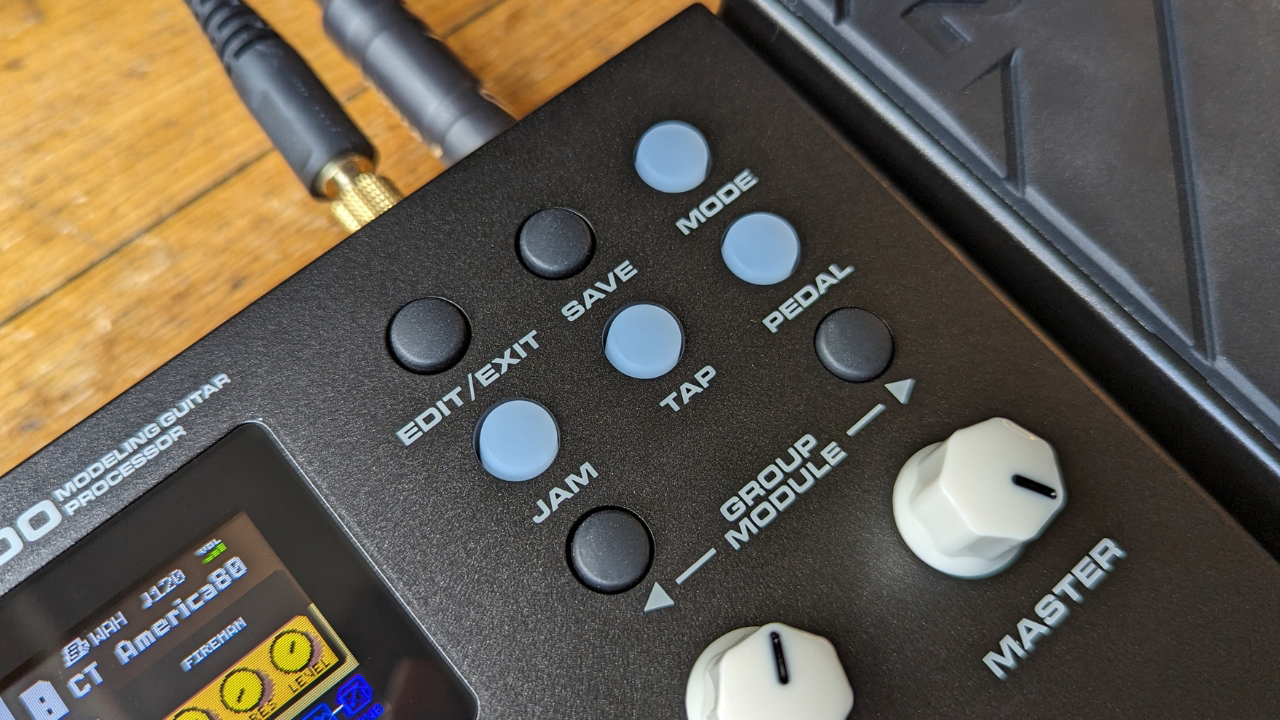
Grabbing a Harley Benton single cut I’m also reviewing I began by cycling through the presets is simple enough, with the left switch going back and the right switch moving you forward. There are 9 banks each with four presets lettered ‘A’ to ‘D’, so plenty to get you going from the off. The screen shows bold white letters which are easily visible when standing so you know which preset is on at any given time.
Pressing the two footswitches together to access the tuner is a little awkward as they’re so far apart that I had to turn my foot sideways to get them both. The colors are also weirdly presented, with green showing a flat note, blue if it’s in tune, and red if the note is sharp. Coming from other tuners this feels a little strange initially, but it’s easy enough to get past.
All the latest guitar news, interviews, lessons, reviews, deals and more, direct to your inbox!
Pressing the edit/exit button allows you to dive further into the preset and begin customizing, revealing a more colorful display with simplistic pictures of the gear the MG-300 is emulating. The group module left and right buttons allow you to move through your signal chain, whilst the settings themselves are edited by the gain, level, and master knobs.
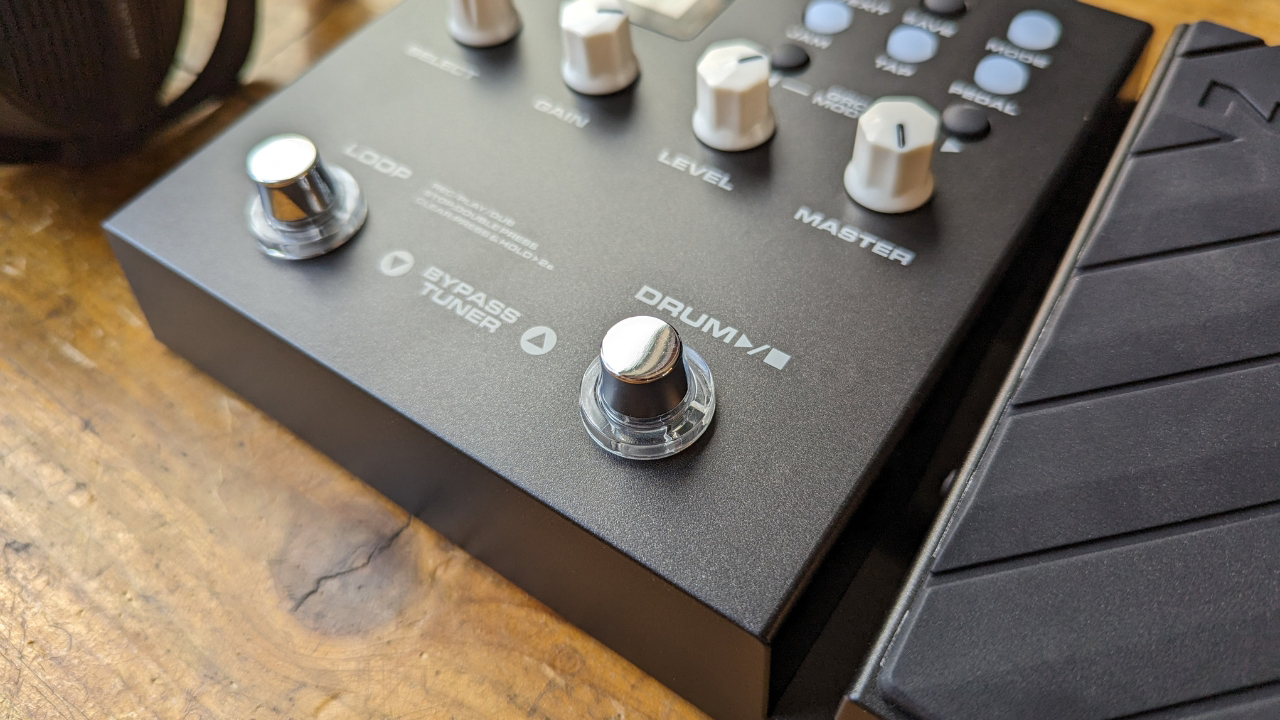
These aren’t always necessarily corresponding to what you're changing either, with them moving the gain, presence, and level knobs as well as the bass, middle, and treble controls of an amplifier depending on what screen you’re looking at. Similarly, if you switch to a pedal then it will control whichever three parameters are currently displayed on the screen. There’s a bit of a jump as you move the knobs too, depending on where they’re currently located before you change the page, so it’s worth noting which position they’re originally in before you start turning.
Next up I hit the jam button to see what was available, greeted by a three-by-three grid of various styles. A press of the right-hand footswitch begins the chosen drum loop, which can cover rock, country, blues, metal, and funk amongst many others, as well as the curiously named ‘bald’ which presumably means ‘ballad’ as it’s full of slower beats. There’s also a ‘beat’ genre, which gives you a metronome with various time signatures available to play along to.
In Jam mode, the select encoder changes the tempo, and you can also dial in your own via the tap button. Meanwhile, the gain knob now cycles through various beats within the style, giving you a total of seven patterns in each genre. Separate controls for the drum pattern and guitar volume let you even up the sounds too, dialing in a perfect tone to jam along with. The audio quality of the beats isn’t anything groundbreaking, but it’s certainly usable for beginners making their first strides or someone looking for a simple beat to play along with.
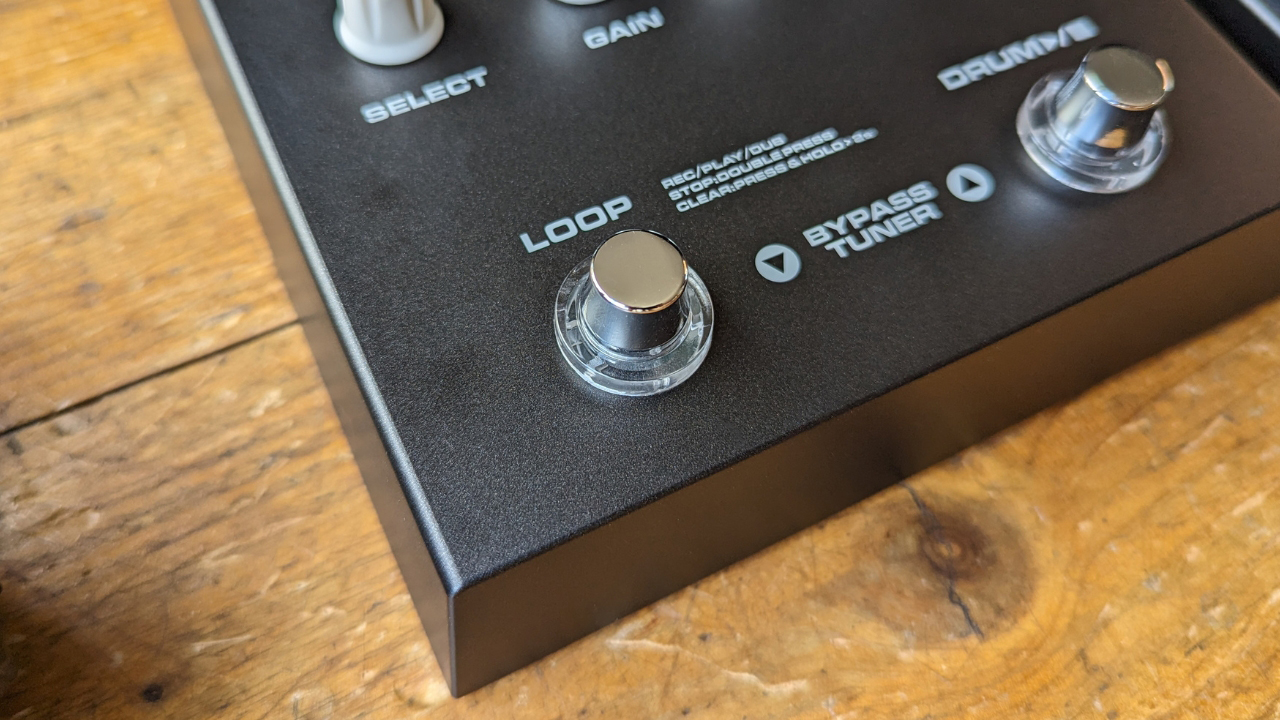
Jam mode also opens up the onboard looper, which features a single control for all actions. A single press records, and then plays back your loop. Double pressing stops the loop whilst holding for 2 seconds clears everything. The MG-300 features a quantize option that will automatically synchronize you’re playing to the tempo of each beat, and you can stack a myriad of loops on top of one another. I got to about 7 or 8 loops in the style of Hermanos Gutierrez, utilizing some of the Fender clean amp tones alongside a funk beat.
You can also exit and change your guitar tone without the loop or drum beat stopping, useful if you want to build tones on top of one another. There doesn’t appear to be any way to save the tracks you loop which is unfortunate, so it’s more a tool for practice rather than writing. To get the best out of it you need to use the looper with the pedal at your feet, but the display is absolutely tiny, so making sense of what’s going on was difficult. Once you learn everything however it’s still an incredibly useful tool for the beginner guitarist, even if it’s not as complete a looper as you might wish for.
NUX MG-300 review: Sounds
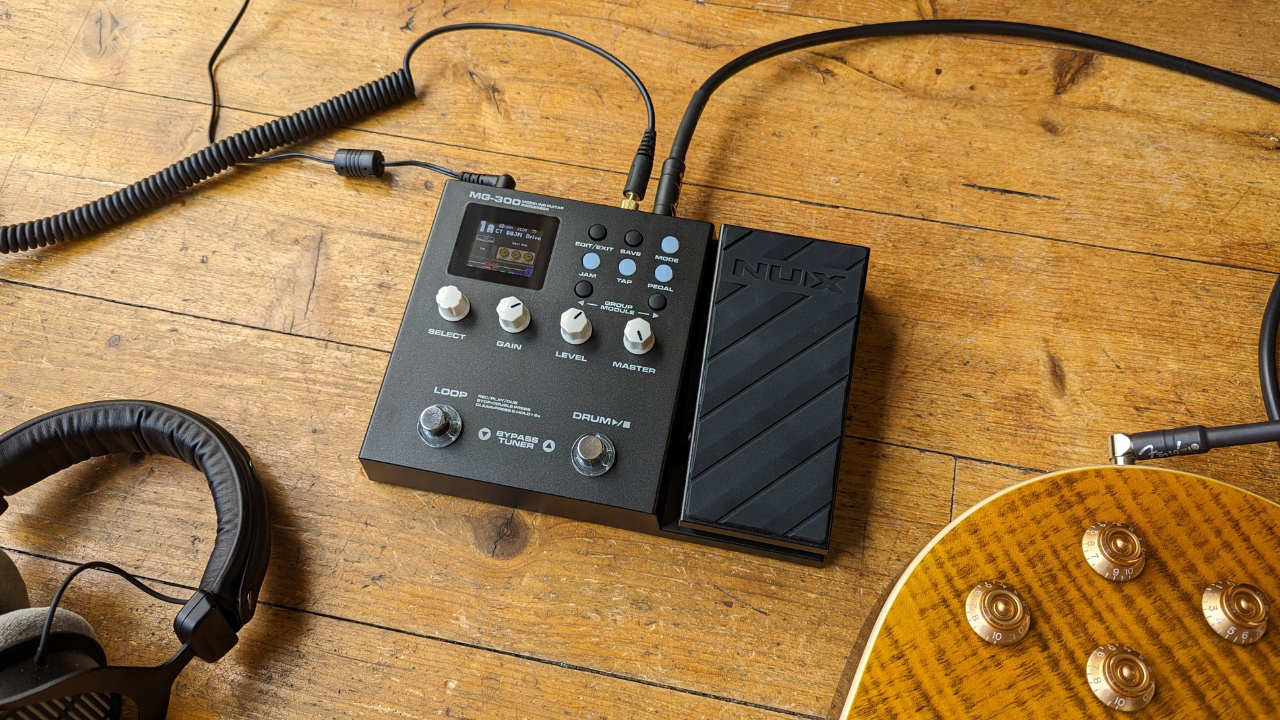
Next, I moved on to testing out some of the stock sounds. There’s plenty on offer here, from your classic Fender cleans to the grind of high-gain metal amps and lots more in between. There’s an annoyingly sharp gate on most of the high-gain tones, which cuts your notes out before they’ve finished ringing but this is easily edited out by diving into the menu.
And boy are the sounds good. Fourteen-year-old me felt some serious pangs of jealousy stomping my way through the preset tones with my DT990s on. The cleans sound absolutely delicious, with a full-bodied tone augmented by a fantastic range of delays and reverbs. Mid-gain tones deliver too, letting you attack for more overdrive with your pick or tread lightly to get a clean tone. The metal-orientated tones do sound fantastic, although there’s a slight hint of digital harshness creeping into some of the higher gain settings.
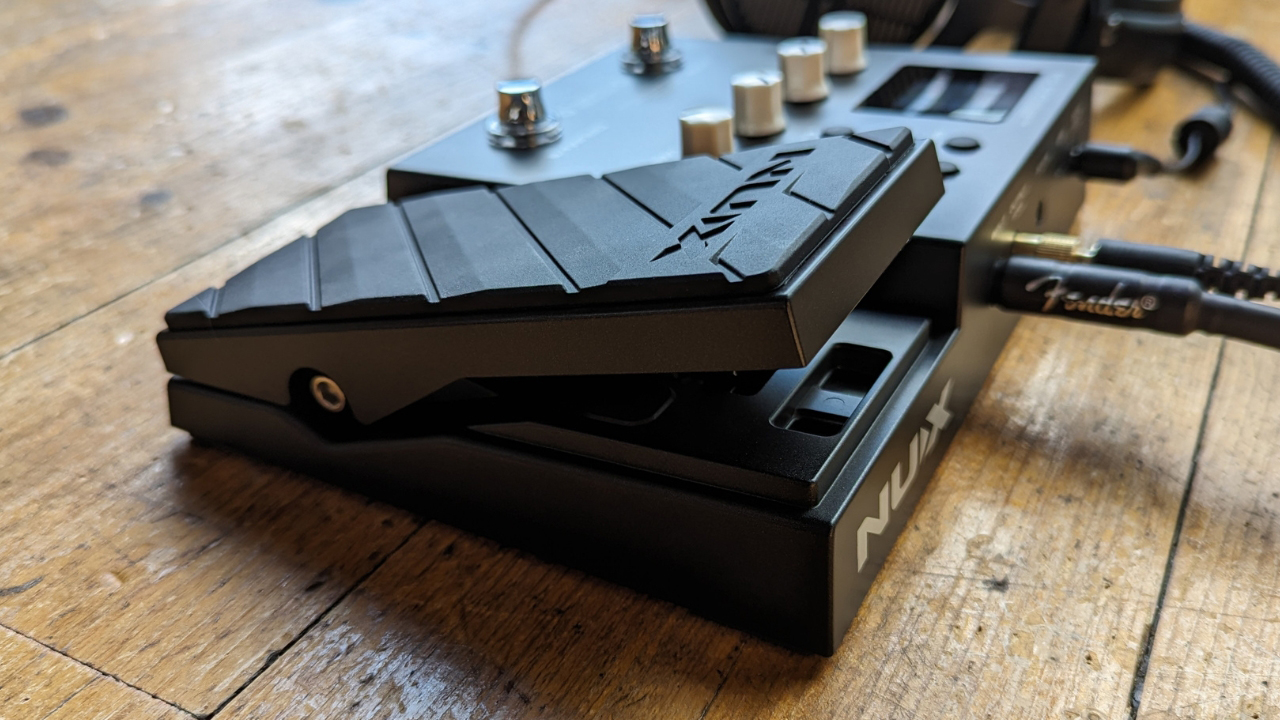
In terms of effects, there’s plenty to play with too. The ping-pong style ‘pan delay’ is super fun to use and the tape delay pedal lets you do crazy self-oscillation effects. Not to mention all the modulation effects on offer. Each effect can be placed in pre or post if you prefer your chorus or flanger before the amp, and certain effect parameters can be controlled by the expression pedal, whether you want to change the modulation of a chorus or use the pitch shifter to do Tom Morello-style whammy sweeps.
There are 8 slots you can utilize to create or edit sounds, with each slot allocated to a particular effect. Each amp model also has a cabinet attached to it, which allows you to change between four different mics and three positions for added tonal flexibility. It’s not the most complete I’ve seen of course, but for a beginner guitar player, I reckon it’s plenty to get you up and running into the world of amp modeling without feeling too overwhelming.
NUX MG-300 review: QuickTone App
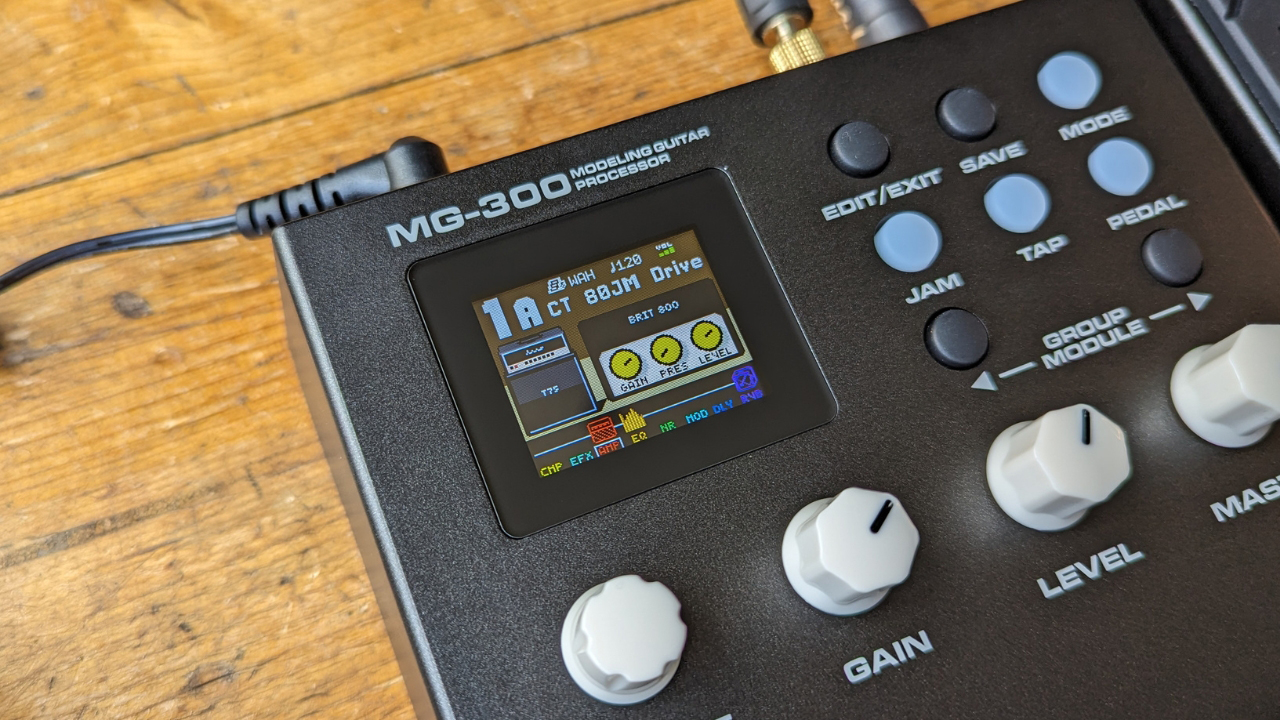
I also tested the QuickTone app on my Windows machine, which is where I encountered the first and only real negative of the MG-300. The initial install of the app was breezy, and I was quickly able to use it to load my own York Audio impulse responses, massively enhancing the quality of the cab sounds versus the stock ones. It’s easy enough to navigate around the app too, with your presets available from the left-hand side or in the top menu, whilst clicking an object in your signal chain at the top allows you to edit settings, with a right click to swap the module out for something different.
The next logical step was to see how it fared as an audio interface and this is where I hit a stumbling block. Once I downloaded the ASIO driver from the NUX website, the app would no longer detect that the unit was plugged in via USB. I deleted the driver via the Device Manager in Windows, removed the config files, and then deleted and unzipped the download folder with the QuickTone app in it which seemed to solve the problem. Unfortunately, when I tried installing the driver again I hit the same issue.
I consider myself pretty tech-savvy but I spent a good hour trying to get my head around why the app would suddenly not work, but to no avail. A Google search led to forum posts where many guitarists were having the same problem, to which the answer appeared to be not to bother installing the ASIO driver and go direct into your audio interface. Possibly I was unlucky with a driver or DAW conflict as there are videos on YouTube of the MG-300 working in Reaper, but alas I wasn’t able to get it up and running in Pro Tools which is a shame.
NUX MG-300 review: Verdict
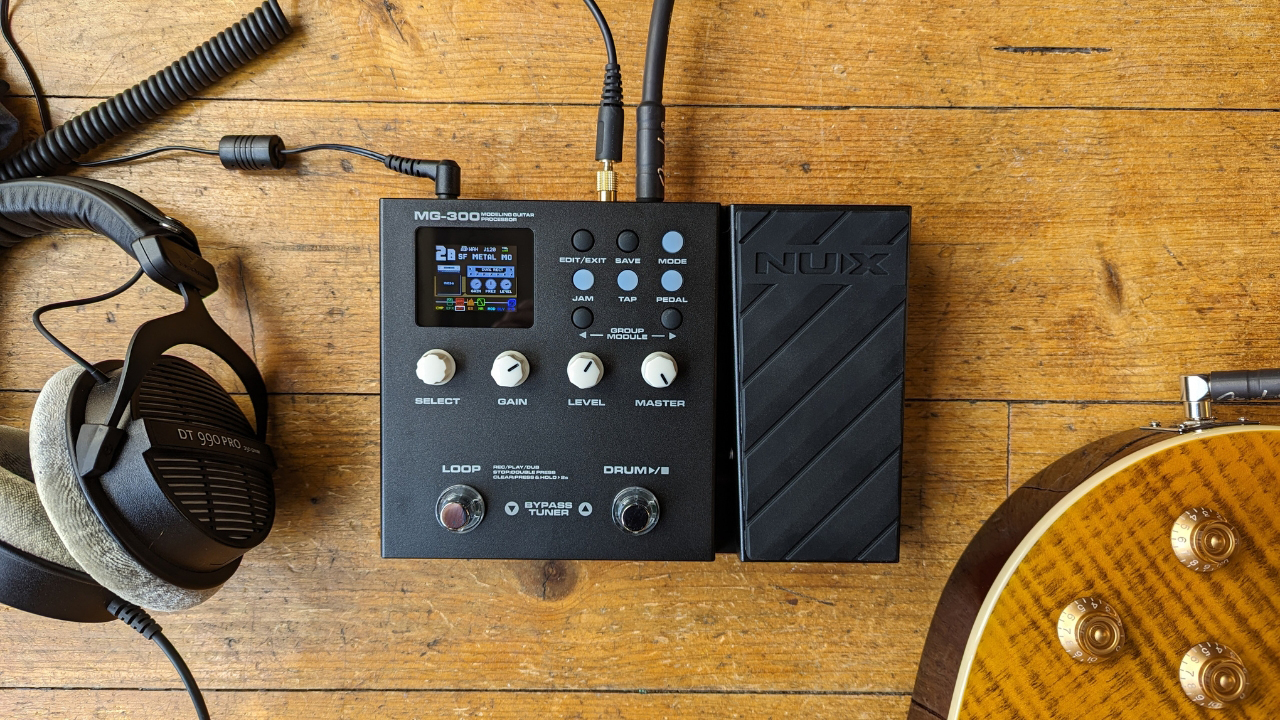
Pushing that last hiccup to one side, I think the NUX MG-300 is a brilliant multi-effects pedal for the beginner guitarist. It’s packed full of great sounds and options, yet remains easy enough to navigate that newbie guitarists won’t struggle to get their heads around it.
The looper is a powerful addition for practicing rhythm and lead playing, and although the connectivity is basic, it does exactly what most beginner guitarists will need. The driver issue is a definite negative, and the screen is quite hard to see from a distance, but these are small blips from an otherwise perfect performance.
NUX MG-300 review: Specs
- Price: $159 / £119
- Type: Amp modeler/profiler and multi-effects
- Key features: 25 amp models, 50 effects, expression pedal
- Connections: 1 x 1/4-inch input, 1 x 1/4-inch output (phones), 1 x 1/8-inch aux in, 1 x micro USB port
- Contact: NUX

Matt is a Junior Deals Writer here at Guitar World. He regularly tests and reviews music gear with a focus on guitars, amps, pedals, modelers, and pretty much anything else guitar-related. Matt worked in music retail for 5 years at Dawsons Music and Northwest Guitars and has written for various music sites including MusicRadar, Guitar Player, Guitar.com, Ultimate Guitar, and Thomann’s t.blog. A regularly gigging guitarist with over 20 years of experience playing live and writing and recording in bands, he's performed everything from jazz to djent, gigging all over the country in more dingy venues than you can shake a drop-tuned guitar at.
